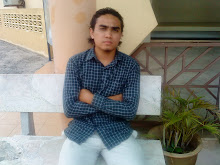
Hardcore punk is a subgenre of punk rock that originated in North America and the United Kingdom in the late 1970s. The new sound was generally thicker, heavier and faster than earlier punk rock. Early hardcore punk had a quick tempo though drums and vocals were in time with the tempo, where as modern hardcore punk had drums and vocals which are not equal with the tempo. The songs are usually short, fast, and loud, covering topics such as politics, personal freedom, fascism, authority, violence, social alienation, straight edge, veganism and vegetarianism, war, religion, drugs and the hardcore subculture itself.
Hardcore spawned several fusion genres and subgenres, some of which had mainstream success, such as melodic hardcore, metalcore, post-hardcore and thrash metal.
In the United States, the music genre that became known as hardcore punk originated in different areas in the early 1980s, with notable centers of activity in California, Washington, D.C., New York City, Michigan, and Boston.
The origin of the term hardcore punk is uncertain. The Vancouver-based band D.O.A. may have helped to popularize the term with the title of their 1981 album, Hardcore '81. Until about 1983, the term hardcore was used sparingly, and mainly as a descriptive term. (i.e., a band would be called a "hardcore band" and a concert would be a "hardcore show"). American teenagers who were fans of hardcore punk simply considered themselves fans of punk – although they were not necessarily interested in the original punk rock sound of late 1970s (e.g., Ramones, Sex Pistols, The Clash, or The Damned). In many circles, hardcore was an in-group term, meaning music by people like us. Since most bands had little access to any means of production, hardcore lauded a do-it-yourself (DIY) approach. In most cities the hardcore scene relied on inexpensively-made DIY recordings created on four-track recorders and sold at concerts or by mail. Concerts were promoted by photocopied zines, community radio shows, and affixing posters to walls and telephone poles. Hardcore punk fans adopted a dressed-down style of T-shirts, jeans, and crewcut-style haircuts. While 1977-era punk had used DIY clothing as well, such as torn pants held together with safety pins, the dressed-down style of the 1980s hardcore scene contrasted with the more elaborate and provocative fashion styles of late 1970s punk rockers, which included make-up, elaborate hairdos and avant-garde clothing experiments.
During the same period, there was a parallel development in the United Kingdom of a British form of hardcore punk or street punk. British hardcore bands such as Discharge and Chaos UK took the existing late 1970s punk sound and added the incessant, heavy drumbeats and distorted guitar sound of New Wave of British Heavy Metal (NWOBHM) bands such as Motörhead. This contributed to the development of the thrash metal sound of the 1980s.

0 comments:
Post a Comment